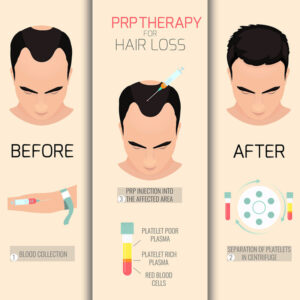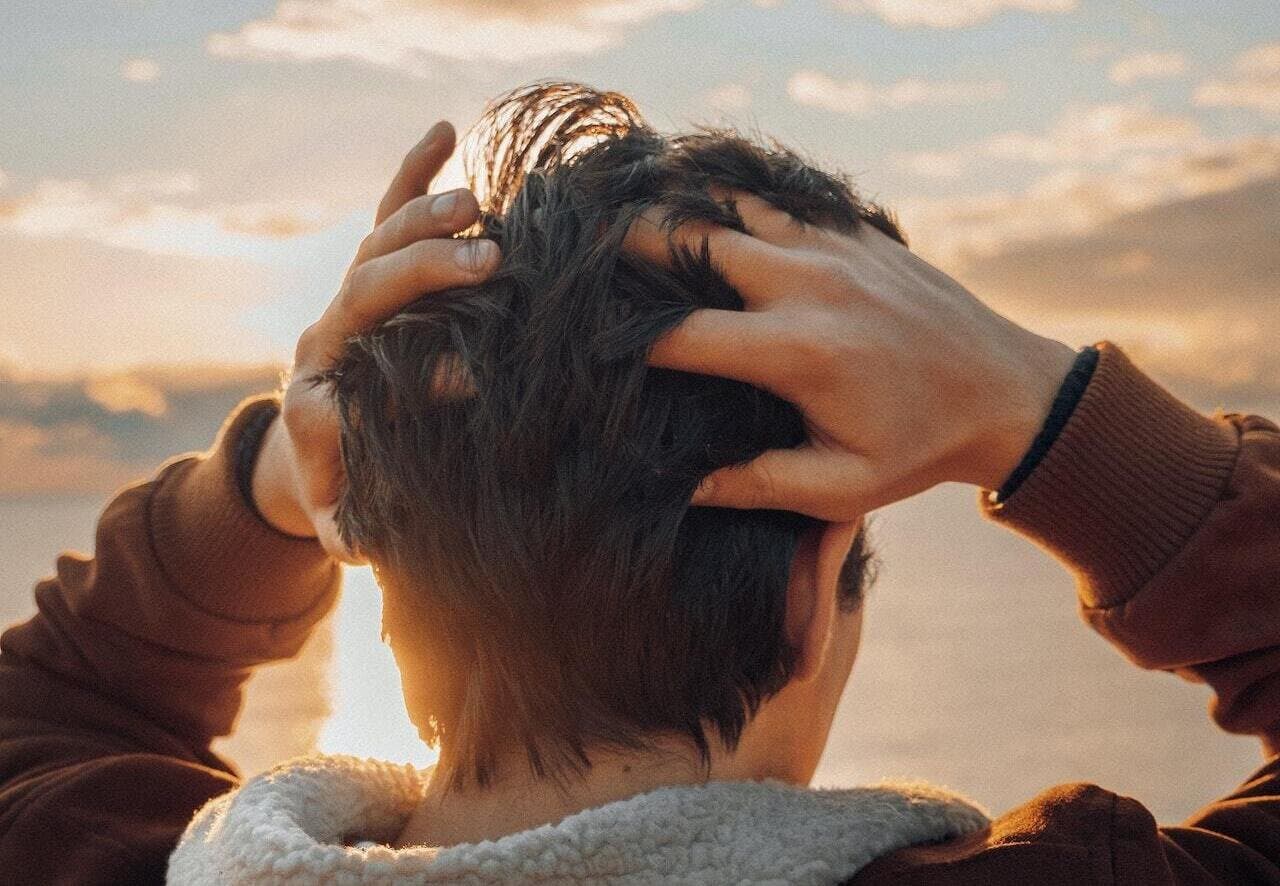Hair loss is a common concern for many people, especially as they age. But losing hair in your 20s can be alarming and cause significant stress.
If you’re wondering whether losing hair is typical at a certain age, there are many reviews based on personal experiences that can help you find out more about it for your beauty concerns.
Causes of Hair Loss in Young People?
Understanding the hair cycle is crucial in comprehending hair loss. According to the American Academy of Dermatology, about 25% of men experience hair loss before they turn 21, which may indicate a disruption in their hair cycle.
Meanwhile, around two-thirds of men experience some degree of hair loss by the time they’re 35, which could also be a result of the hair cycle. Women, on the other hand, can also experience hair loss in their 20s, but it is less common.
There are several reasons why someone may experience hair loss in their 20s, but genetics is one of the most common causes. Androgenetic alopecia, or male or female pattern baldness, is a genetic condition that causes hair loss in specific patterns.
-
Extreme Dieting
One of the leading causes of hair loss in young people is extreme dieting. When the body doesn’t receive enough nutrients, it prioritizes essential bodily functions over hair strength and growth.
-
To Much Stress
Stress is another common cause of hair loss in young people. When the body experiences stress, it produces the hormone cortisol, which can cause hair loss. Additionally, stress can cause hair-pulling behaviors such as trichotillomania, which can lead to hair loss.
-
Changes in Hormones
Hormonal changes during a significant period of a person’s life can cause temporary hair loss. These hormonal changes can occur during puberty, pregnancy, and menopause. Additionally, conditions such as polycystic ovary syndrome (PCOS) can cause hormonal imbalances that lead to hair loss.
-
Smoking
Smoking is a known risk factor for hair loss in young people. It damages hair follicles and decreases blood flow to the scalp, leading to hair loss and thinning.
-
Hairs Styling
Particular hair styling practices can damage hair follicles and lead to hair loss, including excessive heat styling, harsh chemicals, and tight hairstyles.
Taking the necessary precautions and hair care before you proceed with potentially damaging hair styling practices is essential. You may also avoid them entirely and let your hair flow beautifully and naturally.
-
Female Pattern Hair Loss
Female pattern hair loss is a genetic condition that affects about 8 million women in the UK. It begins with a thinning of hair on the crown of the head caused by hormonal changes.

-
Androgenic or Androgenetic Alopecia Genetics
Androgenic alopecia is a common form of hair loss that affects both men and women because of heredity. It happens when a genetic predisposition becomes sensitive to androgens – male hormones that can cause hair loss.
-
Autoimmune Disease or Thyroid Disorders
Autoimmune diseases such as lupus and thyroid disorders can cause hair loss in young people. These conditions cause the body’s immune system to attack hair follicles, leading to hair loss.
-
Traction Alopecia
Traction alopecia is a form of hair loss caused by tight hairstyles, such as braids, ponytails, and cornrows. The constant pulling on hair follicles can cause damage and lead to hair loss.
-
Alopecia Totalis and Alopecia Areata
Alopecia Totalis and alopecia areata are autoimmune conditions that cause hair loss. Alopecia areata typically causes hair loss by patches, while alopecia totalis causes complete hair loss on the scalp.
Symptoms
For men, hair loss typically begins at the hairline and crown, while women experience thinning all over the scalp. If you have a family history of androgenetic alopecia, you will likely experience hair loss in your 20s.
So now that we have established that it’s common to experience hair loss in your 20s, that doesn’t mean it won’t make you feel self-conscious about the experience. It’s completely understandable to feel alarmed and concerned, whether it’s about your appearance or overall condition.
Hair Loss Therapy and Treatments Everybody should Consider?
Aside from medications and hair transplants, several loss treatments are available to help slow down or stop hair loss and promote hair regrowth.
-
Low-Level Laser Therapy
Low-level laser therapy involves using a special light to stimulate hair growth. This treatment can is performed at home with a handheld device or in a healthcare professional’s office.
-
Platelet-Rich Plasma Therapy
Platelet-rich plasma therapy involves injecting a concentration of platelets from your blood into your scalp to promote hair growth. This treatment is available at our PRP hair London clinic.

-
Scalp Micropigmentation
Scalp micro-pigmentation is a non-invasive hair loss procedure that involves tattooing tiny dots on the scalp to create the appearance of hair follicles. This treatment can be effective for those with a shaved or closely cropped hairstyle.
Although it’s not exactly a hair loss therapy, this cosmetic hair loss treatment may help you gain confidence in your appearance.
What’s the Difference Between Thinning and Receding?
We first need to understand the two distinct types of hair loss: Hair thinning and receding hairline.
Thinning and receding hairlines are conditions affecting individuals of all ages. Many people use the two terms loosely when referring to hair loss; however, these two are very different.
Thinning is a reduction in the diameter of individual hair strands, which can make the hair appear less dense and full. Various factors, including genetics, hormonal changes, nutritional deficiencies, and medicinal side effects, can cause hair loss.
Hair loss can occur all over the scalp or in specific areas, progressing gradually.
On the other hand, a receding hairline is a loss of hair at the front of the scalp, typically along the hairline. Receding hairlines are most commonly associated with male pattern baldness, although they can also affect women.
A combination of genetics and hormonal changes can cause receding hairlines, such as an increase in androgen hormones like testosterone. When a person’s hairline recedes over time, it creates a more prominent forehead and an M-shaped hairline.
Hair loss and receding hairlines are two distinct types of hair loss, and they can co-occur. Realistically speaking, many individuals with male or female pattern baldness experience both Thinning and a receding hairline.
Are You Hair Shedding or Hair Thinning During 20s?
Hair shedding and hair thinning are two common hair loss conditions that can be confusing to differentiate. Here are some key differences between the two:
Hair shedding is a natural process that occurs when hair reaches and end of its growth cycle and falls out. We are estimated to lose around 50 to 100 hair strands daily.
The causes of hair shedding in your twenties may vary, but common factors are hormonal changes, stress, medication, illness, and certain hairstyles. Hair shedding occurs all over the scalp. Luckily, hair loss caused by shedding is not noticeable unless there is excessive shedding.
Meanwhile, as mentioned, hair loss makes hair appear less dense and full due to the gradual reduction in the diameter of individual hair strands. Hair loss usually occurs in specific areas of the scalp, and the hair loss is likely noticeable.
If you’re unsure whether you’re experiencing hair shedding or hair thinning in your twenties, here are a few things you can do:
- Observe your hairbrush or comb after brushing your hair. If you see a lot of hair strands, it could indicate hair shedding.
- Look at your hairline and the crown of your head in the mirror. If you notice a reduction in hair density or a receding hairline, it could indicate hair loss.
- Consult with a good healthcare professional or a good dermatologist who can examine your scalp and hair to determine the underlying cause of your hair loss.
Can My Hair Grow Back If Treated Properly?
Hair can grow back after thinning. However, hair regrowth depends on several factors, like the extent of hair loss and the overall health of the scalp and hair follicles.
If stress, hormonal changes, and nutritional deficiencies are the primary causes of your hair thinning, then the hair may grow back on its own once these causes are addressed. However, if genetics and medical conditions caused your hair loss, hair regrowth may be more challenging and likely won’t happen.
It’s important to note that regrowing hair after thinning will take time, and the results will not be immediate. Hair regrowth can take several months or even years to become noticeable. Even then, the hair may not fully return to its original thickness and density.
How Can I Stop Losing Hairs In 20s?
There are several steps you can take to help prevent or slow down your hair loss. Here are some tips to help stop losing hair in your 20s:
-
Eat A Balanced Diet
Avoid hair loss by consuming biotin, vitamin D, and iron-rich food. A diet rich in vitamins and minerals can help promote healthy hair growth, so eat plenty of fruits, vegetables, whole grains, lean protein, and healthy fats.
-
Reduce Stress
Stress is a common cause of hair loss, so finding ways to manage stress can help prevent hair loss. Try relaxation techniques like yoga, meditation, or deep breathing exercises.
-
Avoid Harsh Hair Styling Practices and Products
Avoid harsh chemicals on your hair, such as bleaching or coloring products. Additionally, avoid tight hairstyles that pull on your hair, such as tight braids, ponytails, and buns.

-
Take Care of Your Scalp
Keep your scalp clean and healthy by washing your hair regularly with a gentle shampoo. Avoid using hot water because it can dry out your scalp. Additionally, use conditioner to keep your hair moisturized.
-
Treat Underlying Medical Conditions
If your hair loss is caused by an underlying medical condition, like an autoimmune disease or thyroid disorder, treating the condition can help prevent further hair loss.
-
Take Medication
Medications like minoxidil and finasteride can help slow down or stop hair loss and promote growth. These medications require a prescription from a healthcare professional.
-
Consider a Hair Transplant
Hair transplant surgery is a painful surgical procedure that involves taking hair follicles from one area of the scalp and transplanting them to the balding areas. This procedure can be effective for those with advanced hair loss.
How Often Should You Wash?
It’s necessary to keep your scalp clean and healthy to promote hair growth, but washing your hair too often can strip it of its natural oils and cause damage. On the other hand, not frequently washing your hair enough can lead to oil and dirt buildup, clogging hair follicles, and hair loss.
As a general rule of thumb, most people can wash their hair every two to three days. However, if you have a particularly oily scalp or engage in activities that cause you to sweat heavily, you may need to wash your hair more often.
When washing your hair, using a gentle shampoo that won’t strip your hair of its natural oils is essential. Additionally, avoid using hot water, which can dry out your scalp and cause damage to your hair.
Use lukewarm instead, and rinse your hair thoroughly to remove all shampoo and conditioner.
Consult a healthcare professional or dermatologist if you’re concerned about washing your thinning hair.
They can provide personalized recommendations based on your specific hair and scalp needs.
How to Cope with Hair Loss?
Losing your hair is a troubling and stressful experience. Dealing with it requires a lot of patience and perseverance. Here are some ways to help you cope with hair loss.
-
Join A Support Group to Reduce Stress
Joining a support group can be a great way to connect with others experiencing hair loss. It can be helpful to talk to others who understand what you’re going through, share tips, and get some advice on how to cope with hair loss.
-
Cover Up
Covering hair loss with hats, scarves, or wigs can be a temporary solution while coping with hair loss. Various hairpieces are available to give you a natural look and help you feel more comfortable.
-
Be Patient
Hair regrowth can take time, so it’s essential to be patient and consistent with any treatment plan you’re following. It’s also important to remember that hair regrowth may not be possible for everyone, and learning to accept your appearance can be a valuable coping strategy.
-
Avoid Miracle Cures
Many products claim to cure hair loss, but it’s wise to approach these claims cautiously. Be wary of products that promise quick or exaggerated results. Additionally, always speak with a healthcare professional before starting any new treatment.
-
Talk About it with People
Talking about your hair loss with friends, family, or a healthcare professional can help you process your emotions and develop a coping plan for losing your hair. It’s important to remember that you’re not alone and that help is available.
-
Accept It
As shown in this study about hair loss and psychological effects in men, accepting your hair loss can be challenging, but it can also be empowering. Accepting your hair loss and embracing your appearance can help keep your integrity, and able you to cope.
Don’t Be Ashamed of Losing Hair in 20s
Whether it’s due to an underlying medical condition, a genetic issue, stress, or simple hair shedding, losing hair is not something to be ashamed of. It’s part of life, and at one point, it does become normal for almost everybody as they mature.
Overall, hair loss in your 20s should not cause alarm – once you understand why it’s happening. There are many treatments you can undergo or simple lifestyle changes you can make to help slow down hair loss.
Changes in your diet, becoming more physically active, avoiding harsh hair styling practices and products, or simply washing your hair in recommended intervals can promote healthy hair growth or regrowth in your 20s.
Otherwise, don’t go immediately to the worst-case scenario if your hair still falls.
Have that conversation with us at Artistry Clinic we can guide you through the process of treating your hair loss with PRP. It’s entirely up to you how you handle this common issue and how you will let it affect the rest of your life.




